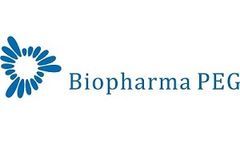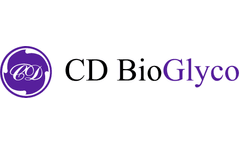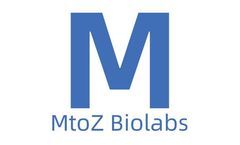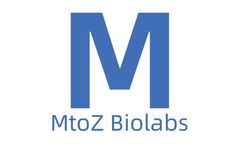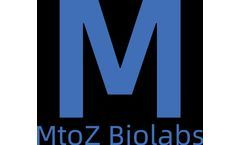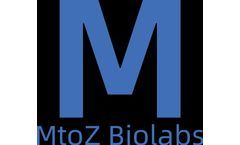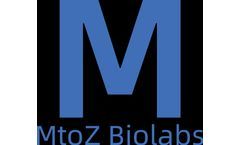Drug Molecule Articles & Analysis
79 articles found
Introduction PEGylation, the process of attaching polyethylene glycol (PEG) chains to therapeutic molecules, has become a cornerstone in pharmaceutical development. This technique improves the pharmacokinetic and pharmacodynamic properties of drugs, enhancing their stability, solubility, and circulation time while reducing immunogenicity. ...
Antibody-drug conjugates (ADCs) combine potent small-molecule drugs with monoclonal antibodies for targeted cancer therapy. A major challenge is loading enough drug onto each antibody without compromising solubility or circulation time. ...
As spring arrives, so does a renewed focus on cleaning, quality, and process validation in pharmaceutical facilities. Whether it’s a routine seasonal turnover or preparation for ramped-up production cycles, spring is a critical time in the pharmaceutical industry for equipment maintenance, cleaning validation, and ensuring product purity. Behind every cleanroom, batch reactor, or filtration ...
As spring arrives, so does a renewed focus on cleaning, quality, and process validation in pharmaceutical facilities. Whether it’s a routine seasonal turnover or preparation for ramped-up production cycles, spring is a critical time in the pharmaceutical industry for equipment maintenance, cleaning validation, and ensuring product purity. Behind every cleanroom, batch reactor, or ...
This diversity allows for the metabolism of a wide range of compounds, influencing the pharmacological effects and toxicity of drugs. Role in Drug Metabolism The role of cytochrome P450 in drug metabolism is two-fold: it can either detoxify drugs or convert them into active metabolites. The metabolic pathways involving CYP ...
While this approach has been successful for many drug targets, it is limited by several factors: l Off-target effects: Small molecules can bind to unintended proteins, leading to side effects. l Drug resistance: Over time, mutations in the target protein can render small-molecule inhibitors ineffective. l Limited druggable ...
In glycobiology, microarray printing involves immobilizing glycan molecules, glycan-binding proteins, or enzymes onto a surface, creating a "glycan microarray." ...
Recombinant protein drugs refer to protein products derived from animals or plants and developed through biotechnology research. These proteins possess certain biological activities and can prevent, treat, and diagnose diseases in humans, animals, and plants. Compared to small molecule drugs, protein drugs have advantages such as ...
Recombinant protein drugs are protein-based therapeutic drugs which are produced by using DNA recombination technology or other biotechnological methods. ...
Studying changes in protein phosphorylation in these diseases can help reveal the molecular mechanisms of these conditions.3. Drug DevelopmentBy screening small-molecule drugs that affect protein phosphorylation levels, potential drug targets and candidate drugs can be discovered.4. ...
The result can be used to guide the screening and development of drugs, and support the evaluation of their safety and the design of clinical drug delivery protocol. Pharmacokinetic characteristics are composed of and determined by drug absorption, distribution, metabolism and excretion. The structure, physiological properties and ...
Glycosylated impurities refer to a kind of glycosylated product formed during the synthesis, storage, and use of drugs, mainly resulting from non-enzymatic reactions between sugars and drug molecules. ...
Antibody-drug conjugates (ADCs) represent a groundbreaking class of therapeutics that combine the specificity of monoclonal antibodies (mAbs) with the potent cytotoxic effects of small-molecule drugs. ...
By conjugating PEG chains to drug molecules, pharmaceutical companies can create formulations that dissolve more readily in biological fluids, ensuring that the active ingredient reaches its target site in the body. Prolonging Drug Half-Life The process of PEGylation, which involves attaching PEG chains to therapeutic ...
Peptide drugs are bioactive molecules composed of multiple amino acids connected by peptide bonds. ...
Peptide drugs are bioactive molecules formed by connecting multiple amino acids through peptide bonds. ...
The principle of drug antibody testing is based on the recognition and response of the immune system to drug molecules. When the drug is recognized by the human immune system as a foreign substance, the immune system produces specific antibodies to neutralize or clear these drug molecules. ...
Identification of Drug StereochemistryMany drug molecules are chiral, and their activity, metabolism, and toxicity can significantly differ due to stereochemistry. CD can differentiate the different chiral forms (enantiomers) of drugs, which is critical to ensuring drug safety and efficacy.2. Study of ...
Since antibody-drug conjugates (ADCs) have the molecular characteristics of both small molecule and macromolecule therapeutic drugs, when choosing analytical methods, the typical ones used for both should all be considered. There are many different molecules in ADCs, and the difference between these molecules ...
Alfa Cytology has announced its small molecule drug development to advance preclinical cancer research. Alfa Cytology, a comprehensive biotech company specializing in cancer research, has recently announced the cancer small molecule drug development services. The services tend to accelerate the discovery and optimization of ...


